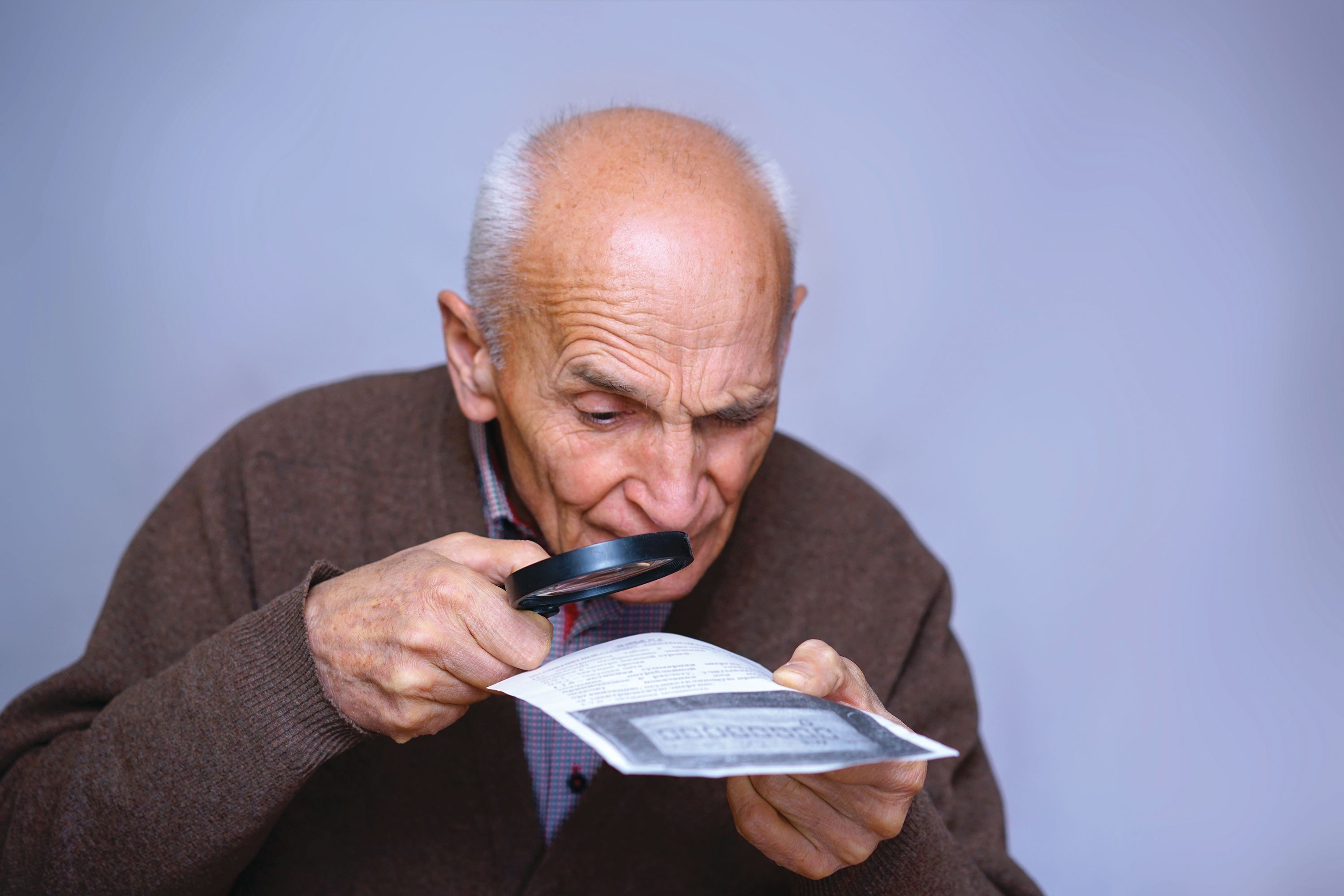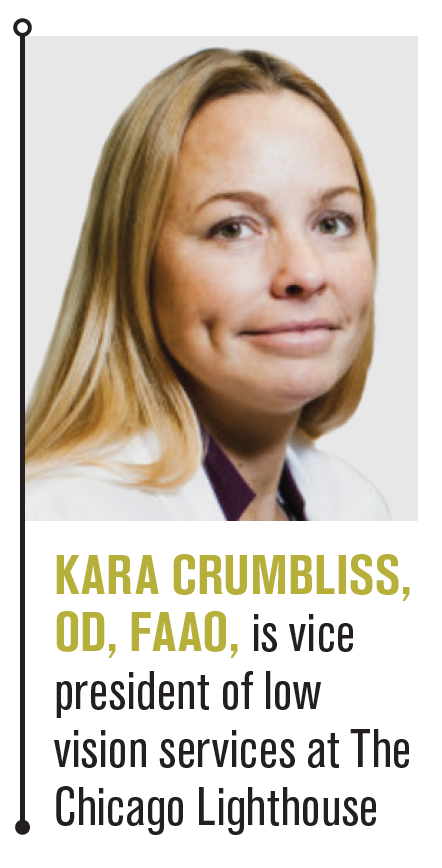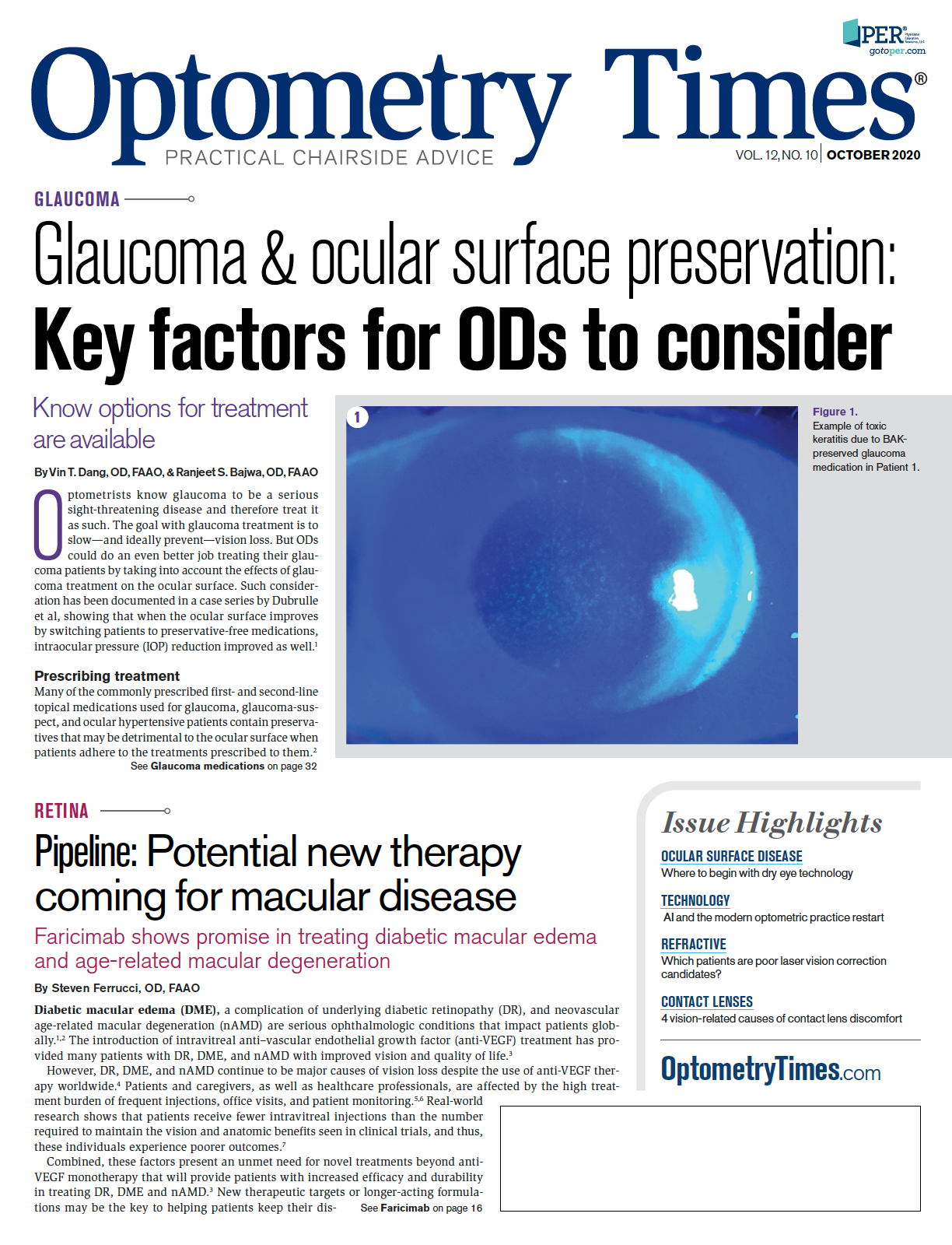Vision rehabilitation care for low vision patients in the COVID-19 era
Keep the specific needs of this patient population in mind as more patients return to the office


For individuals suffering from vision loss, low vision rehabilitation is the standard of care. Because of the spread of SARS-CoV-2, doctors of optometry must develop new techniques to provide low-vision rehabilitative services with safer protocols.
This is an unprecedented time in optometric and vision rehabilitation care for all providers and patients. I have been an optometrist practicing low vision rehabilitation for more than 15 years at The Chicago Lighthouse, where our comprehensive vision rehabilitation clinic serves more than 3500 patients each year.
While reviewing the guidance from the U.S. Centers for Disease Control and Prevention (CDC), Occupational Safety and Health Administration (OSHA), and our optometric associations, I noticed that these recommendations do not accommodate people with visual disability. It is imperative that optometrists offering vision rehabilitation services consider additional accommodations for this large patient population during the novel coronavirus (COVID-19) pandemic and recovery. I share some recommendations here.
Mental health effects
Age-related eye diseases are the leading cause of blindness and low vision in the United States.1 As such, most patients referred for vision rehabilitation fall into the population over age 65 years that the CDC currently advises to continue to stay home and avoid close contact with others whenever possible.2
ODs can continue to offer telehealth visits where possible but realize that some patients will need to be seen— for both their vision health and mental health.
Depression is strongly associated with functional vision loss.3 Social isolation is linked with poor mental health, and results of a recent poll show that 47 percent of people sheltering in place reported negative mental health effects from worry or stress related to the novel coronavirus.4
Strategies people may use to cope and relax such as TV watching, reading, and exercise can be challenging or even impossible for persons with vision impairment who do not yet have optical or assistive technology. The combination of being sight “isolated” and socially isolated may compound negative mental health effects.
Vision rehabilitation may have an antidepressant effect.5 Ensure that patients whose care has been delayed during the pandemic are not experiencing additional emotional and psychological consequences. Ask your patient if she feels anxious or depressed. If this is the case, you may want to, in advance of your examination, make a referral to a mental health professional currently offering telehealth services.
Related: Smart contact lens update
Telehealth
If it is unsafe to bring a patient with low vision into the office, consider a telehealth visit, which is covered by Medicare and by many third-party insurers during this COVID-19 pandemic.6 A prescription for a magnification device to be mailed to the patient can be based off the last known best corrected visual acuity. Training in use of the device may be done virtually if the patient has access to computer technology or on the telephone. This telehealth strategy may restore some interim reading ability while a patient stays at home until it is safe to visit the office.
Accommodations during office visits
As many low vision providers return to seeing patients in the office, ODs should think about the specific needs of these patients and how to safely meet them.
Following are suggestions in addition to general COVID-19 guidance from the American Optometric Association.7
Related: In vivo bulbar conjunctival structures study results in
Prepare patients for in-office changes
and screen for mental health effects
– Contact patients before their examination and educate them on what changes to expect because of COVID-19 restrictions. Preparing them will help prevent surprise and unneeded anxiety during the appointment.
Patient registration and payment
– Reserve first-of-the-day appointments for elderly and other patients at high risk of COVID-19.
– If practices recently began using an online portal for patients to preregister and/or pay bills and copays, ensure that patients can use this technology and consider barriers to successful use. Determine whether this portal is compatible with common screen magnification and screen readers. Can the patient see his insurance cards and credit cards?
Ask if patients are familiar with accessibility software or know where to obtain it. Many patients are referred to ODs for vision rehabilitation to learn about these resources and do not have them before the examination.
– For patients who cannot access online portals themselves, consider completing the registration and history over the phone.
– Make concessions for accepting payments in person for patients who prefer to do so or who cannot access online payment.
Related: Improve medication adherence with technology
Patient entrance
Current public health recommendations suggest allowing only the patient into the office—no family members except for guardians of minors. In vision rehabilitation, however, ODs most often encourage a person or coach to accompany the patient because for many elderly patients with age-related cognitive changes, a second set of ears or a note taker to capture information given is helpful.
Many patients are newly referred and do not yet have mobility skills that make them comfortable to ambulate without a sighted guide. Furthermore, some eyecare practices are calling patients in from their cars to avoid waiting room congregation where possible. Many patients do not drive, so waiting in a car may not be possible, and weather conditions may prevent them from waiting outside.
– Allow patients who cannot wait in a car into the waiting room, with chairs spaced an appropriate distance apart.7
– Consider allowing one appropriately screened family member to accompany the patient to the appointment.7
– For those who do not have someone to accompany them, determine whether a staff member will act as a sighted guide. This can be done in 1 of 3 ways. The guide can speak directions while maintaining social distancing. For cane users, the guide and the patient can hold opposite ends of a white cane between them. For persons needing further support, the guide and the patient should both wear a mask and gloves so the patient can hold onto the guide.
Related: Distinguish between wellness and medical eye exams
The examination
White coats that need laundering are now discouraged, as is dry-clean-only business attire. The white coat with its high contrast might have signaled to poorly-sighted patients that the doctor was in the room. Wearing a mask, gloves, and scrubs and/or street clothes, with no handshake7 but just an introduction from 6 ft (2 m) away leaves the patient with vision impairment at a disadvantage.
Low vision providers usually get physically close to our patients so they can take advantage of relative distance magnification and perhaps see some of our features. Physical closeness, however, is discouraged in this climate. Wearable video magnification devices, including electronic glasses, for visually impaired individuals require training to use successfully, may be difficult to disinfect, and may be cost prohibitive to have in each examination lane. Other options may be better.
– As ODs take the patients’ histories at a distance, tell them it is for their safety.
– Consider giving patients a photocard of the doctor that they may view from a closer distance.
– Perhaps use a closed-circuit TV camera pointed at the OD across the room with a screen beside the patient so the patient can see the doctor’s features and gestures magnified.
– ODs should consider wearing a facial shield in addition to a mask to allow them to be closer to the patient when needed, especially during trial frame refraction and device evaluation.
– Wear gloves and have patients wear gloves when evaluating low vision devices. Disinfect all instruments after each use.7
– Work to convey a calm and pleasantness with the voice, offering the reassurance vision-imapired patients so desperately need.
– Provide written educational resources for patient reference at the end of the visit.
Grateful, anxiety-relieving hugs from patients are not uncommon. Unfortunately, physical contact is no longer considered safe. Still, try to earn the hugs and then kindly decline them, reinforcing the importance of social distancing.
Follow-up
– Consider a phone follow-up to review the examination findings with a coach or family member if that person was not present at the examination.
– Send a written thorough rehabilitation plan with patient goals.
– As COVID-19 restrictions are lifted, consider a more frequent follow-up interval to ensure goals were not overlooked in haste during a shortened examination.
– Refer a patient for home-based occupational therapy as needed. The American Occupational Therapy Association lists recommendations for safe provision of home-based care, which is still allowed.8 Home care will allow vision-impaired patients to follow stay-at-home guidelines while receiving additional occupational therapy training.
Related: More research coming on drug delivery via contact lenses
Summary
Patients needing visual rehabilitation are looking to optometrists for their health and safety in living with low vision. Deferring care and providing care must be balanced.
In the era of COVID-19, optometry visits have visibly changed to maintain safety recommendations. ODs need to ensure that these changes for patients with visual challenges accommodate their particular needs.
References
1. Centers for Disease Control and Prevention. Common eye disorders. Available at: https://www.cdc.gov/visionhealth/ basics/ced/index.html. Accessed 9/18/20.
2. Centers for Disease Control and Prevention. How to Protect Yourself & Others. Available at: https://www.cdc.gov/ coronavirus/2019-ncov/need-extra-precautions/what-you-can-do.html. Accessed 9/18/20.
3. Zhang X, McKeever Bullard K, Cotch MF, Wilson MR, Rovner BW, McGwin Jr G, Owsley C, Barker L, Crews JE Saaddine JB. Association between depression and functional vision loss in persons 20 years of age or older in the United States, NHANES 2005-2008. JAMA Ophthalmol. 2013 May;131(5):573-581.
4. Panchal N, Kamal R, Orgera K, Cox C, Garfield R, Hamel L, Muñana C, Chidambaram P. The implications of COVID-19 for mental health and substance use. Kaiser Family Foundation. Available at: https://www.kff.org/coronavirus-covid-19/issue-brief/the-implications-of-covid-19-for-mental-health-and-substance-use/. Accessed 9/18/20.
5. Horowitz A, Reinhardt JP, Boerner K. The effect of rehabilitation on depression among visually disabled older adults. Aging Ment Health. 2005 Nov;9(6):563-570.
6. Centers for Medicare and Medicaid Services. Is my test, item, or service covered? Available at: https://www.medicare. gov/coverage/telehealth. Accessed 9/18/20.
7. American Optometric Association. COVID-19 latest updates. Available at: https://www.aoa.org/covid-19/covid-19-latest-updates?sso=y. Accessed 9/25/20.
8. American Occupational Therapy Association. Home health occupational therapy—decision guide for COVID-19. Available at: https://www.aota.org/~/media/Corporate/Files/Practice/ Health/COVID-19-Home-Health-Decision-Guide.pdf. Accessed 9/18/20.

Newsletter
Want more insights like this? Subscribe to Optometry Times and get clinical pearls and practice tips delivered straight to your inbox.